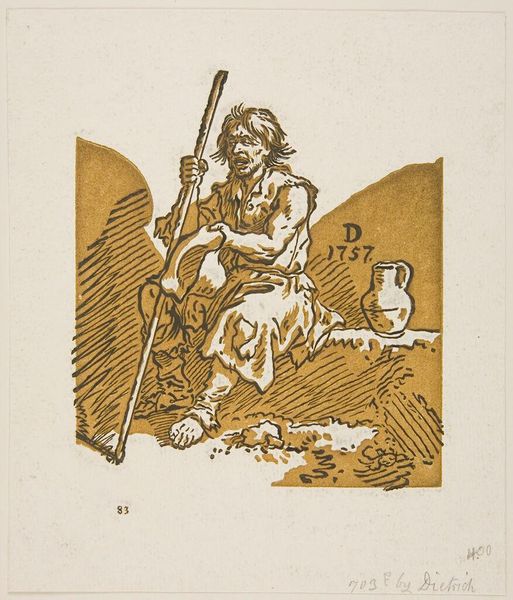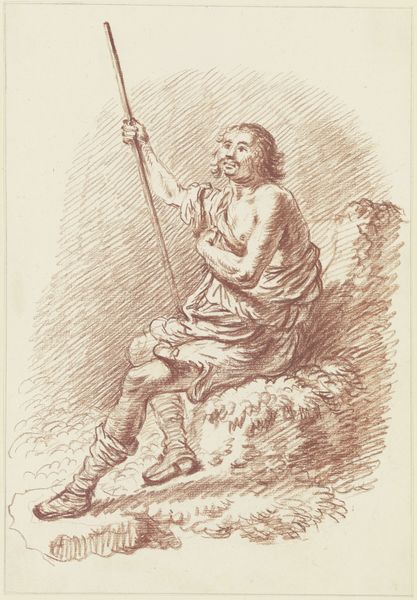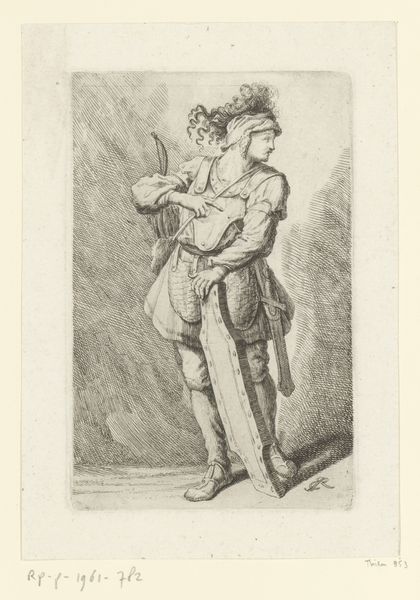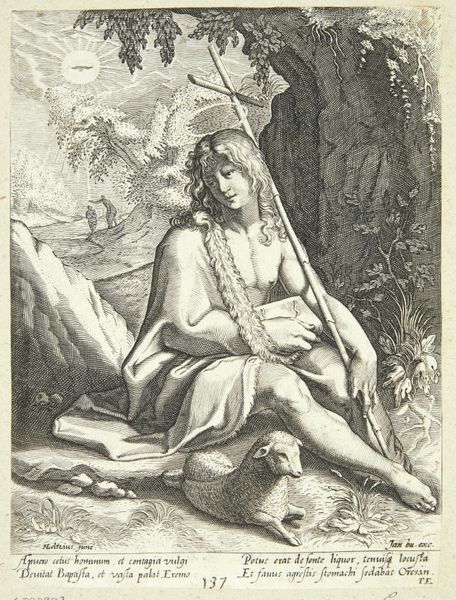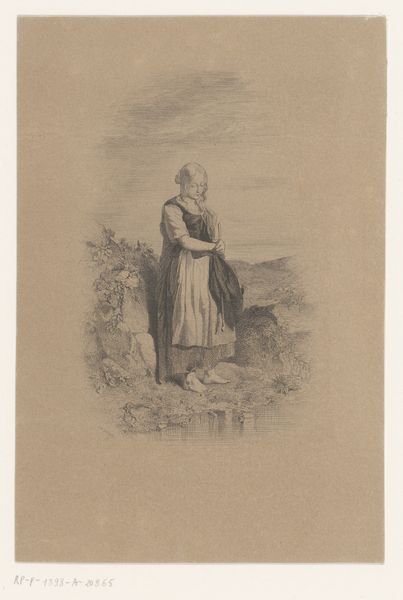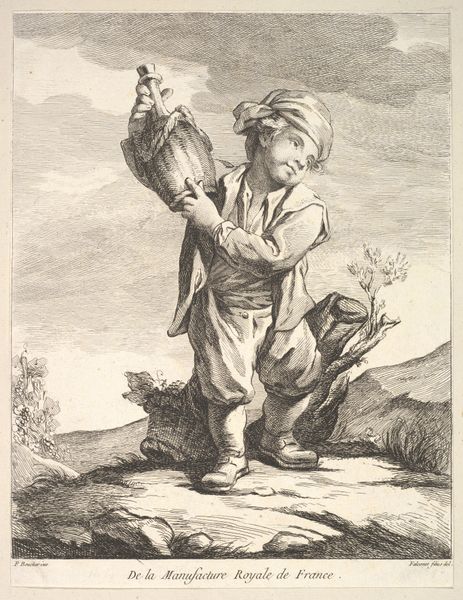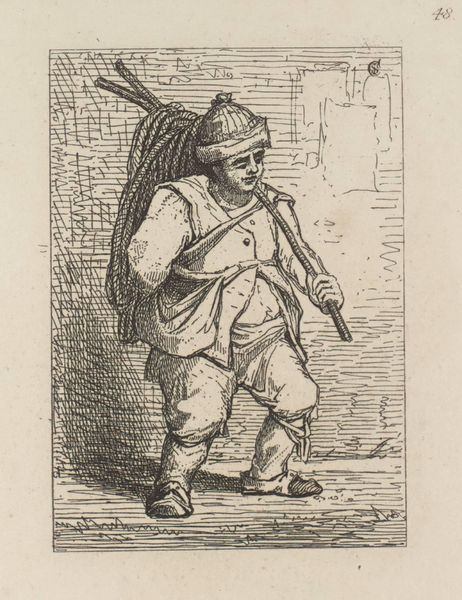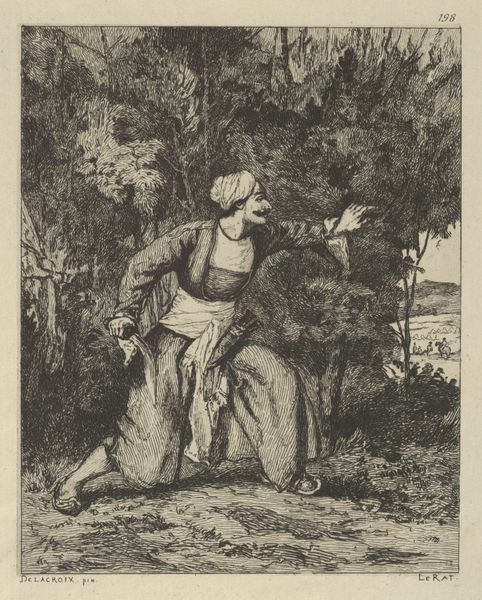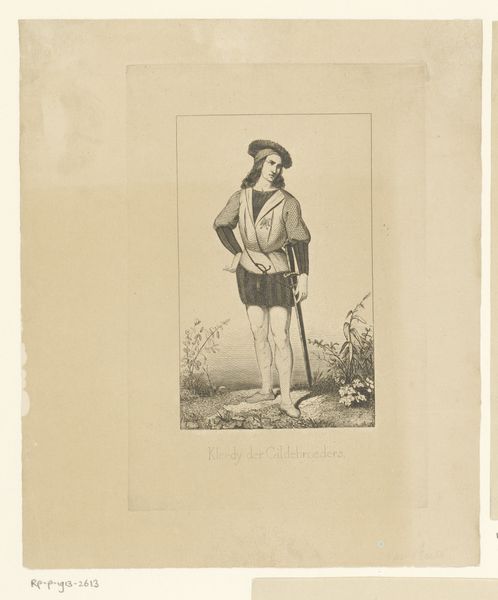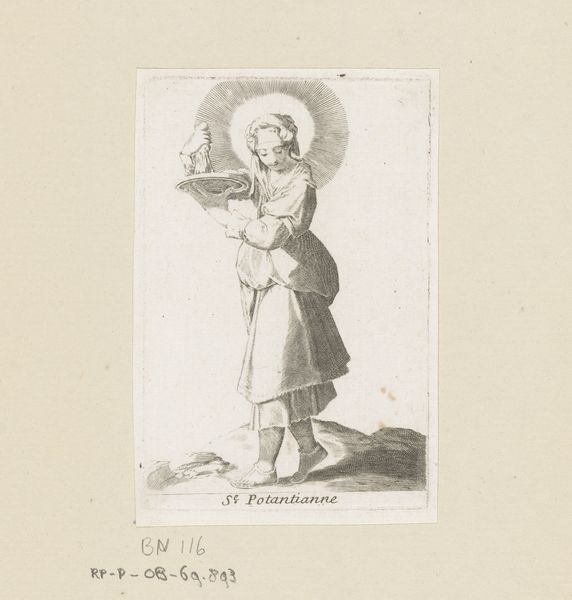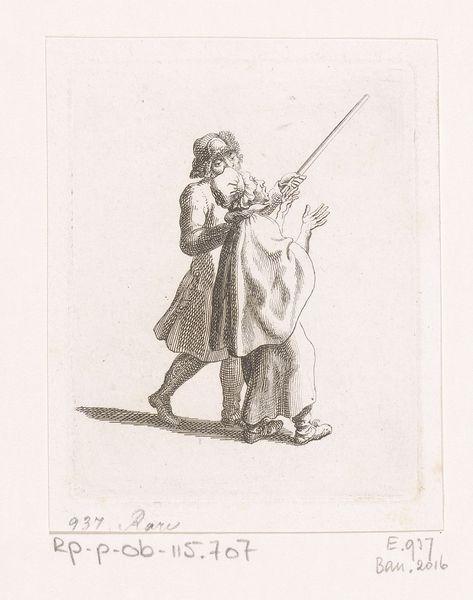
Dimensions: height 168 mm, width 133 mm
Copyright: Rijks Museum: Open Domain
This etching, "Begging Blind Man", was made by Carl Friedrich Holtzmann around the turn of the 18th century. The medium here is modest: etching, a printmaking technique where acid is used to corrode the unprotected parts of a metal surface to create a design. It's a process that allows for detailed, reproducible imagery, but it also speaks to the economic realities of the time. Etchings like these were more accessible than unique paintings, circulating ideas and images amongst a broader public. Notice how Holtzmann uses line and shadow to convey texture and depth. The beggar's tattered clothes, the rough surface of the stone he sits upon, and the man’s weathered skin, all rendered through the careful application of acid to metal. The act of etching itself, with its reliance on skilled labor and reproducible techniques, reflects the changing social and economic landscape of the 18th century. It moves away from unique craftsmanship, and towards a system of mass production and consumption. Appreciating the material and processes behind this image gives us a richer understanding of its historical and cultural significance.
Comments
No comments
Be the first to comment and join the conversation on the ultimate creative platform.

